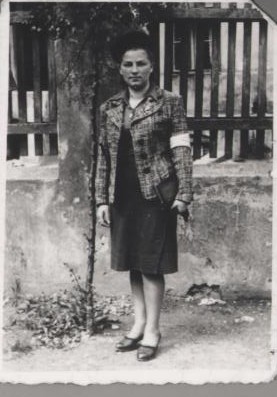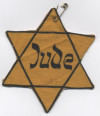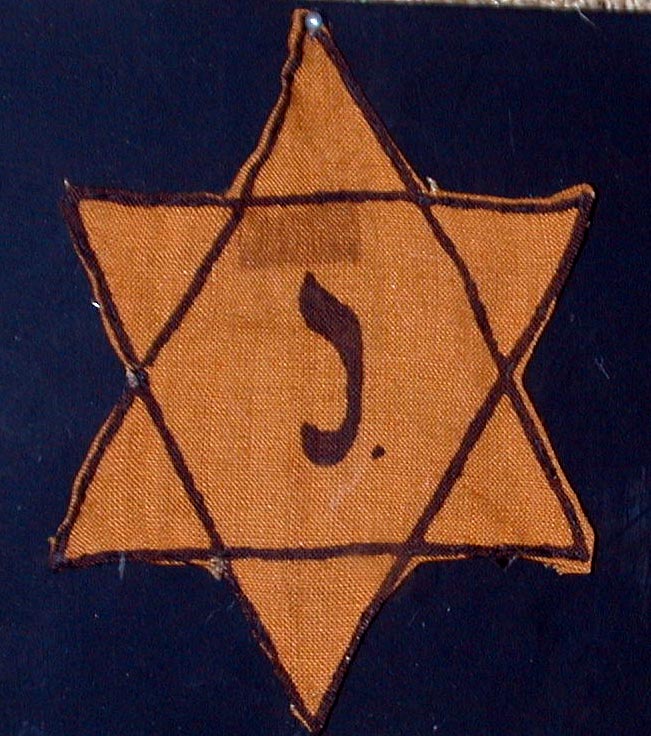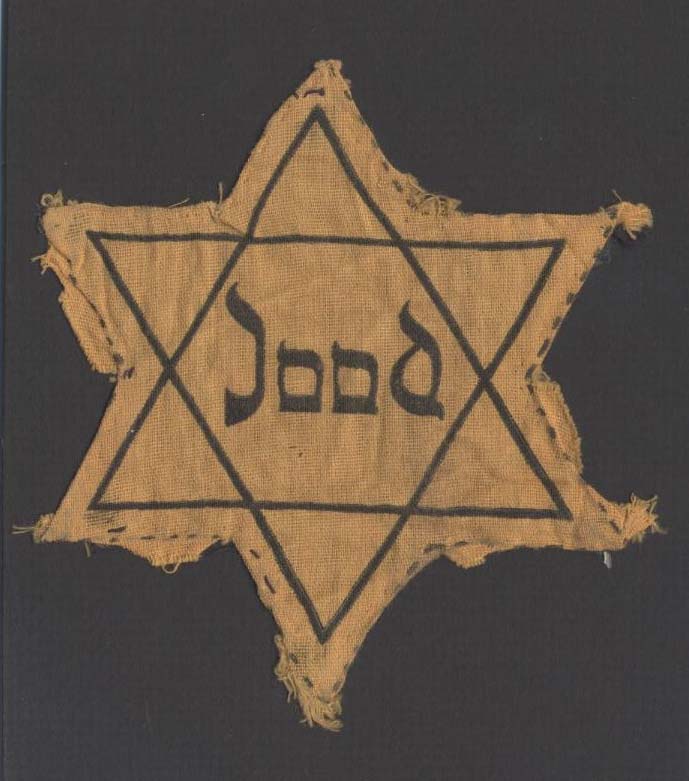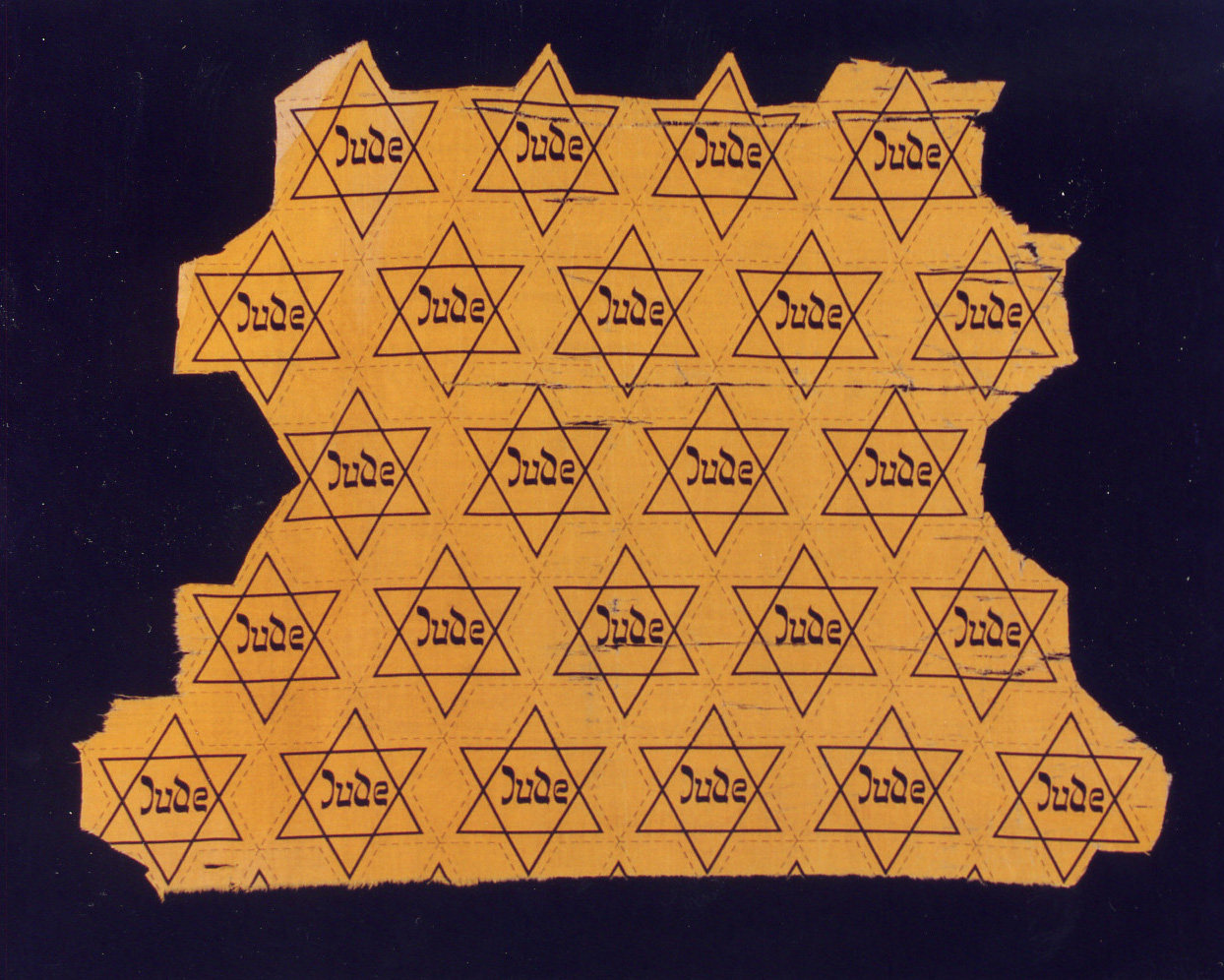
Pictured is a piece of cloth from a bolt of fabric. Printed on the fabric are yellow “Stars of David” and the word “Jude” (Jew) printed in the center of each star. These Stars of David were to be cut (notice the outline) and sold to Jews. In many areas (see below for a list) the Nazis required Jews to sew stars like these onto their clothing so they could easily be identified.
The original bolt of fabric was four feet by six feet. It was most likely made sometime in 1942 in Poland. Mr. Thomas Blatt, author and survivor of the death camp Sobibor, found this piece in Poland in 1984. He brought the piece back to the United States for conservation.
|
Members of the Arrow Cross (Hungarian Nazis) came to our house. They told us to stand in our backyard. They told us that in a few days large posters would be glued onto the walls outside the houses. We had to read and obey them. On them were the “Jewish Laws.” The first law told us to wear the yellow star. We had to wear it whenever we went outside. Where should we get those yellow stars? The Arrow Cross told us. We had to march to the store. Soldiers were all around us. We had to use our own money to buy yellow stars. We had to sew one onto each piece of clothing we had on. Imagine how embarrassed we were when we had to go outside. People looked at us wherever we went. We knew in our hearts that something much more terrible would soon come. - Noemi Ban, in her memoir, Sharing is Healing: A Holocaust Survivor’s Story (2006). Noemi Ban is a member of the Holocaust Center for Humanity’s Speakers Bureau
Fanny Wald, a local Holocaust sur vivor, wearing an armband. Poland, circa 1940. |
This star was worn in the Lodz Ghetto in Poland. On display at the Holocaust Center for Humanity. Photo by Harve Bergmann.
“J” stands for Jood (Jew) in Flemish/Dutch, also for Juif (Jew) in French, the two languages spoken in Belgium. This star was worn by Martha Schnabel-Bloch (1889-1991), the grandmother of local Holocaust survivor Robert Herschkowitz. Jood—Dutch for “Jew.” This star was worn by Elli Metzelaar, the mother of local Holocaust survivor, Peter Metzelaar, in Amsterdam, Holland. |
One time my mother and my cousin got caught not wearing the armband.* The reason you didn’t want to wear them was because anybody can throw rocks at you or hit you, because who was going to protect you? Nobody was out to protect the Jew. So if people went to an area where they were afraid to walk with the armband, they might take it off. Well, the police did catch my mother and my cousin not wearing it. My mother they beat with a ball, a rubber ball, but inside was a piece of steel and her arms were beaten up, were all swollen. My cousin was about seventeen years old, they made her clean an outhouse with her hands. -Henry Friedman in the video “Never Again I Hope” produced by the Holocaust Center (1994). Henry Friedman is a member of the Washington State Holocaust Education Resource Center’s Speakers Bureau.
|
Additional Resources
Holocaust Badges (HolocaustCenter.org)
Yellow Badge (Wikipedia)

